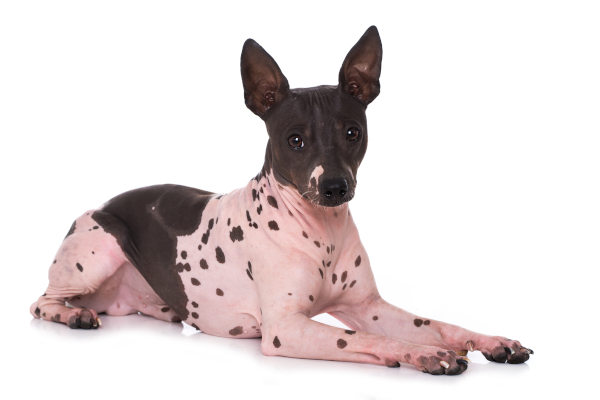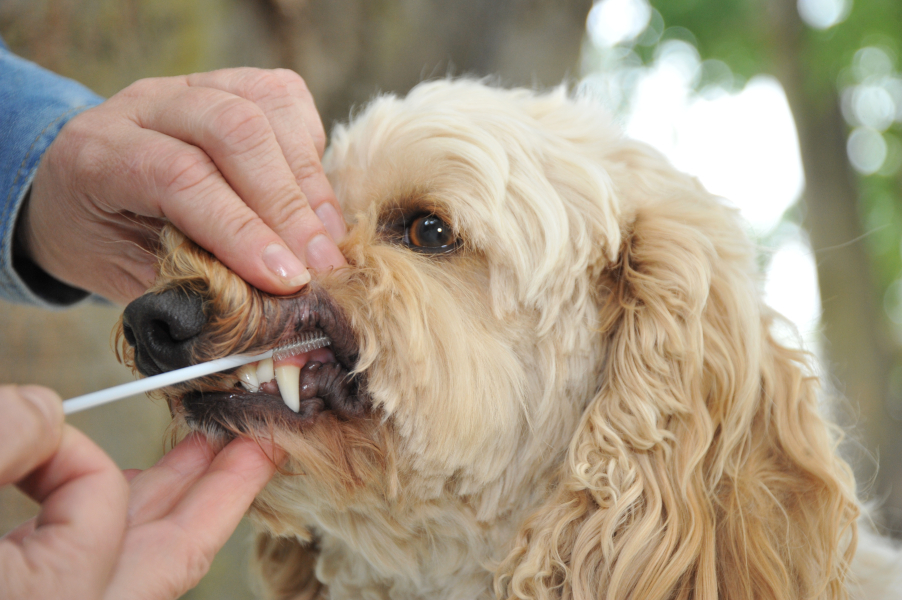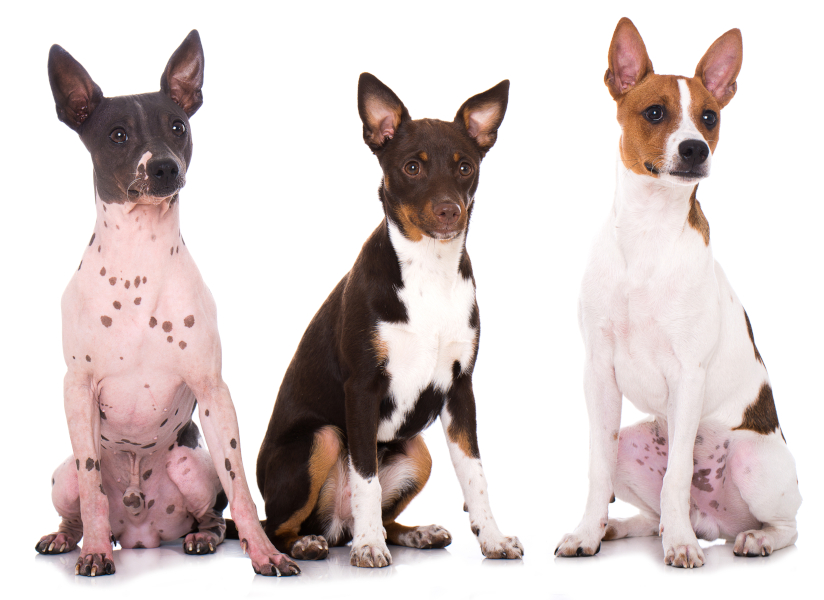Quick Summary

Click here for Price and Turnaround Time
Phenotype: The American Hairless Terrier is usually hairless but some individuals in the breed may be coated.
Mode of Inheritance: Autosomal recessive
Alleles: C = Coated, H = Hairless
Breeds appropriate for testing: American Hairless Terrier
Explanation of Results:
- Dogs with C/C genotype will be coated and cannot pass the hairless variant to any of their offspring.
- Dogs with C/H genotype will be coated but are carriers of the hairless variant. If two carriers (C/H) are mated, 25% of the offspring in the litter are expected to be hairless and another 50% of the puppies are expected to be carriers of the hairless variant.
- Dogs with H/H genotype are hairless. Matings with other H/H genotype dogs are expected to produce all hairless offspring.
Sample Collection
Dog DNA tests are carried out using cells brushed from your dog's cheeks and gums. The preferred cytology brushes are sent to you by mail, or you may provide your own brushes. For accepted alternative brushes, click here
We recommend waiting until puppies are at least three weeks old before testing.

Step-By-Step:
- Make sure the dog has not had anything to eat or drink for at least 1 hour prior to collecting sample.
- When swabbing puppies, isolate each puppy from the mother, littermates and any shared toys for 1 hour prior to swabbing. Puppies should not have nursed or eaten for 1 hour prior to collecting sample.
- If collecting samples from more than one dog, make sure to sample one dog at a time and wash your hands before swabbing another dog.
- Label brush sleeve with name or ID of dog to be sampled.
- Open brush sleeve by arrow and remove one brush by its handle.
- Place bristle head between the dog’s gums and cheek and press lightly on the outside of the cheek while rubbing or rotating the brush back and forth for 15 seconds.
- Wave the brush in the air for 20 seconds to air dry.
- Insert brush back into sleeve.
- Repeat steps 5 - 8 for each unused brush in sleeve on a fresh area of cheek and gums. Make sure to use and return all brushes sent by the VGL. In most cases, it will be 3 brushes per dog. If using interdental gum brushes, please note that the VGL requires 4 brushes per dog and only moderate or wide interdental gum brushes are accepted.
- Do not seal brushes in sleeve.
- Place all samples in an envelope and return to the address provided.
ATTENTION:
- Do not collect saliva/drool – the key to obtaining a good sample is getting cheek cells on the swab
- Do not rub swab on the dog’s tongue or teeth – this will result in poor quality sample
- Do not collect a sample from a puppy that has recently nursed – the mother’s genetic material can rub off on the puppy’s mouth and contaminate the sample

Hairlessness in the dog has evolved independently at least twice. One form of hairlessness present in several breeds (Peruvian Inca Orchid, Chinese Crested, Mexican Xoloitzcuintle) is inherited as a dominant trait and is lethal in the homozygous state (two copies of the mutation). A second, recessive form defines the American Hairless Terrier, a breed thought to be derived through selective breeding from the Rat Terrier. Contrary to the dominant form, there are no adverse effects on dentition or fecundity associated with the recessive Terrier hairlessness.
The recessive Terrier hairlessness trait is caused by a frameshift deletion in the serum/glucocorticoid regulated kinase family member 3 gene (SGK3). A 4 bp deletion (TTAG) in exon 4 of SGK3 disrupts the protein coding sequence and is predicted to knock out the function of the gene. SGK3 has been shown to affect postnatal hair follicle development in mice and appears to have a similar function in dogs: American Hairless Terriers are born with a thin coat of hair that is lost within the first months of life.
Although the trait breeds true in the American Hairless Terrier, outcrosses are performed to systematically introduce variation and create a healthier, more diverse gene pool. These crosses benefit from DNA test results, which will assist breeders in identifying the coated dogs that carry the hairless mutation.
This DNA test for the recessive Terrier hairless trait distinguishes dogs with respect to the mutation: coated and clear (no mutant copy), coated and carrier (one mutant copy), or hairless (two mutant copies).
If a carrier dog (with a single copy of the hairless gene) is used in a mating, an offspring from the cross has a 50% chance of inheriting the mutation from this parent. If two carriers are mated, 25% of the offspring in the litter are expected to be hairless and another 50% of the puppies are expected to be carriers of hairlessness. Mating two clear dogs (C/C) will only produce clear puppies, which need not be tested by DNA.
